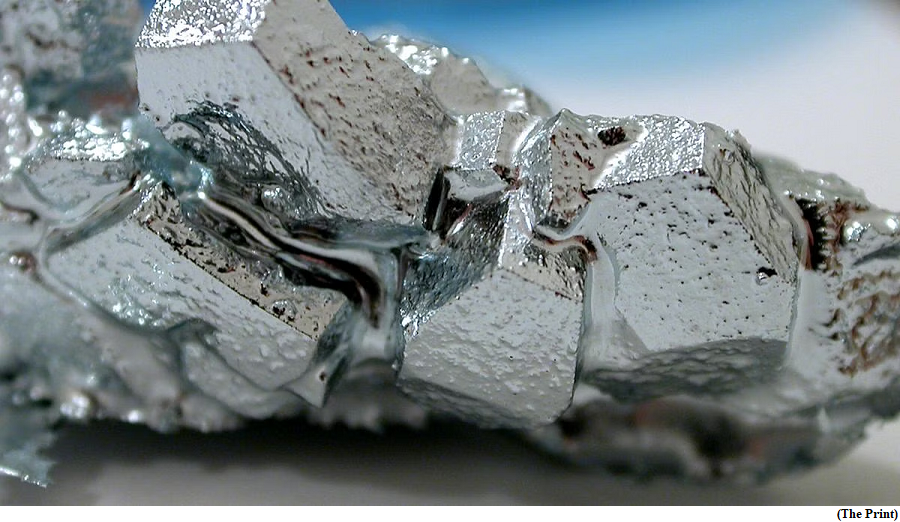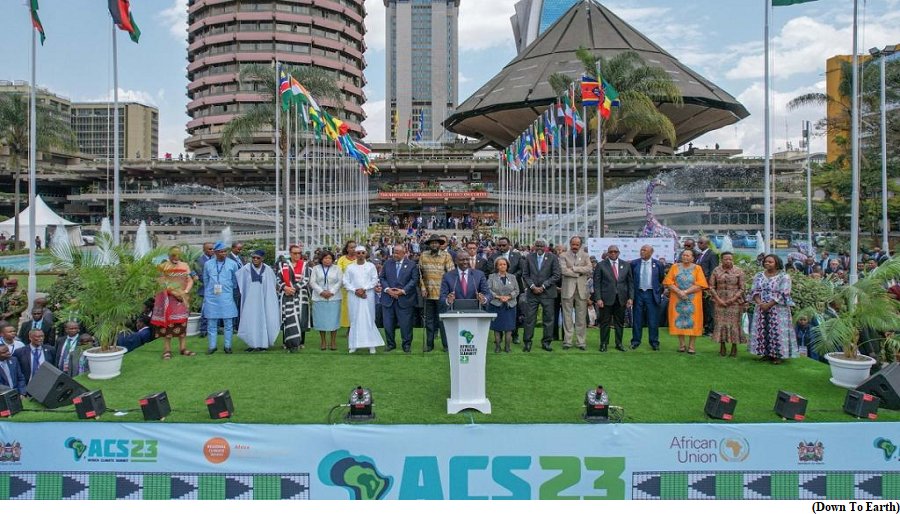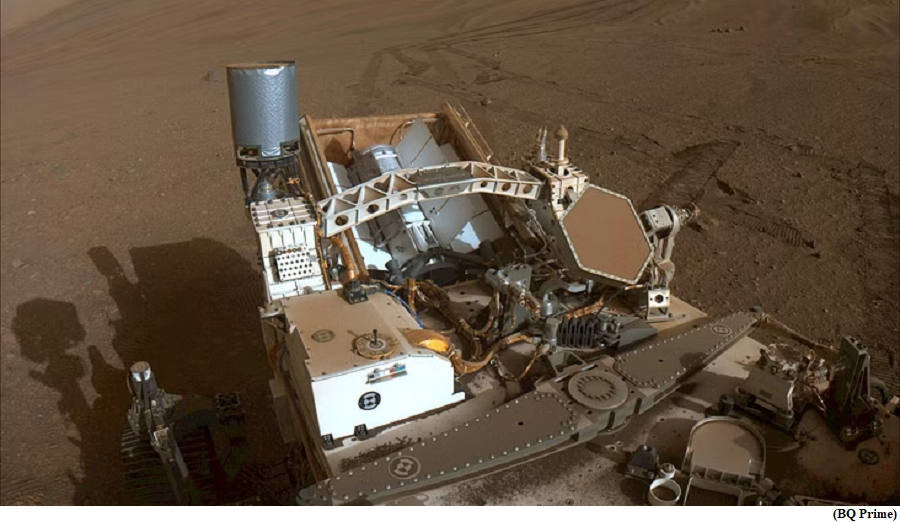For 1st critical minerals policy, India proposes pooling with friendly nations (GS Paper 2, International Relation)

Why in news?
- India first critical minerals policy, proposes to create a common pool for stockpiling these essential resources with friendly countries or groupings of which India is a part, like the Quadrilateral Alliance, or Quad, comprising Australia, Japan, and the US.
- In addition, the policy also proposes identifying critical mineral blocks in other countries by India for investment.
Ongoing initiatives:
- India is already in talks with countries such as Argentina, Australia, Chile, and Mongolia, which are endowed with critical mineral assets such as lithium and cobalt.
- The Ministry of Mines and Minerals is also going to Mongolia in October to participate in a mining expo and discuss possibilities of investing in potential mineral blocks of copper.
- The critical minerals policy also proposes creation of a knowledge network for research in the sector.
What’s the need for critical minerals policy?
- All the moves in the proposed policy are aimed at addressing the supply chain vulnerabilities of critical minerals, which are vital to technology and industry. Critical minerals, including rare earth elements (REE), are used in numerous industries, from aerospace and defence to renewable energy, telecommunications, and semiconductors.
- Presently, India is dependent on China and other countries to meet its requirement of critical minerals and REE such as lithium, which are the building blocks of modern-day technology.
- Over the last year, however, India has undertaken a slew of initiatives in the critical minerals sector. It also underscored the importance of critical mineral supply chains in the G20 Energy Transition Ministers’ meeting in Goa in June 2023.
India’s critical minerals push:
- India took several significant steps in the critical mineral sector in 2023. This included the release in June of a comprehensive list of 30 critical minerals necessary for economic development and national security.
- India also joined the Minerals Security Partnership, a US-led alliance of 14 developed countries in June to “ensure that critical minerals are produced, processed, and recycled in a manner that supports the ability of countries to realize the full economic development benefit of their geological endowments”.
- In August, Parliament cleared amendments to the Mines and Minerals (Development and Regulation) Act, 1957, paving the way for commercial mining of six critical minerals; lithium, beryllium, niobium, tantalum, titanium and zirconium and deep-seated minerals like gold, silver, and copper. Currently, only government agencies are allowed to explore and mine these minerals.
- Parliament also cleared amendments to the Offshore Areas Mineral (Development and Regulation) Act, 2002, which seek to allow commercial mining of mineral resources in offshore areas.
G20 focus area too
- The outcome document of the G20 Energy Transition Ministers’ meeting held in Goa on July 22 emphasised the “need to maintain reliable, responsible, and sustainable supply chains of such critical minerals and materials”.
- This, significantly, was the first time that a G20 meeting on energy transition focused on the supply chain vulnerabilities of critical minerals.
- The Indian presidency of the G20 also proposed high-level guiding principles on a voluntary basis for accelerating the development of the global value chain of critical minerals required for sustainable energy transitions. These principles take into account national circumstances, needs, and priorities.
Africa Climate Summit 2023 ends with ‘Nairobi Declaration’
(GS Paper 3, Environment)
Why in news?
- The inaugural Africa Climate Summit (ACS23) in Nairobi culminated in the ‘Nairobi Declaration’, giving the continent a common voice ahead of upcoming key global engagements.
- The declaration has a raft of recommendations, pledges and demands believed to have boosted Africa’s bargaining power on international platforms.

Key highlights:
- It calls on the global community to act to reduce emissions.
- The declaration also calls for reforms to multilateral financial systems, with concerted appeals for debt relief and restructuring existing debts.
- Besides making tough calls to secure funding for climate mitigation and adaptation, the document’s final version highlights green investment opportunities in Africa’s emerging blue and green economies. It also urges world leaders to back a proposed “carbon tax on fossil fuel trade, maritime transport and aviation”.
- While calling the international community to order, the declaration wants them to honour the annual climate finance pledge of $100bn they made, as a matter of urgency.
- With many African countries having defaulted on loans from developed countries, the declaration proposes debt relief interventions. It recommends extending the debt repayment period and instituting a 10-year grace period to allow the borrowed funds to serve intended development goals.
Multi-billion dollar pledges at summit
- The Nairobi summit largely focused on calls to unlock investment in clean energy.
- The pledges, some directly to Kenya like the €12 million in grants from the European Union (EU) for investment in the green hydrogen industry, are expected to accelerate the continent’s green agenda.
- One of the big pledges at the summit was a $4.5 billion finance initiative announced by COP28 president-designate Sultan Al Jaber towards unlocking Africa’s clean energy.
Several other pledges at the meeting included:
- Britain’s £49 million for UK-backed projects to help Africa achieve its growth agenda in renewable sectors.
- The African Development Bank (AfDB) and Global Center on Adaptation’s $1 billion initiative launched to finance youth-led businesses and startups across Africa. And an additional $25 million from AfDB towards climate finance by 2025.
- $30 million grant for food security and climate resilience efforts across the continent from the US.
- The United Arab Emirates investors pledge to buy $450 million of carbon credits generated in Africa by 2030.
- $200 million investment in green projects across Africa by Climate Asset Management, a specialist climate change investment and advisory firm.
- Germany’s €60 million debt swaps with Kenya to free up money for green projects nationwide.
- $22.8 million grant pledged by the Bezos Earth Fund to accelerate the restoration of 600,000 hectares of degraded lands in East and Central Africa.
- Camco’s $25 million commitment to deepen solar initiatives in Sub-Saharan Africa.
Significance:
- The summit addressed both the need for financing and Africa’s role as part of the solution.
Instrument aboard NASA rover produces oxygen on Mars, completes mission
(GS Paper 3, Science and Technology)
Why in news?
- A unique instrument developed by NASA has shown making oxygen on Mars is possible.
- Mars Oxygen In-Situ Resource Utilisation Experiment (MOXIE) has successfully concluded its operations after proving to be a viable technology for future astronauts on the Red Planet.

Details:
- The device has been generating oxygen aboard NASA’s Perseverance rover since its landing in 2021.
- MOXIE has exceeded expectations by producing a total of 122 grams of oxygen, twice as much as NASA's original goals for the instrument.
- The oxygen produced is of 98% purity or better, making it suitable for both fuel and breathing purposes.
How it works?
- The device works by using an electrochemical process to separate one oxygen atom from each molecule of carbon dioxide in Mars' thin atmosphere.
- The gases are then analyzed to check the purity and quantity of the oxygen produced.
Significance:
- MOXIE's success marks a significant step towards future human exploration of Mars.
- The technology could enable astronauts to 'live off the land', using materials found on the planet's surface to survive.
- This concept, known as in-situ resource utilization (ISRU), has become a growing area of research.
What’s next?
- The next step would be to create a full-scale system that includes an oxygen generator like MOXIE and a way to liquefy and store that oxygen. However, the focus is also on validating other technologies on Mars.
About Perseverance rover:
- It is a robotic explorer to land on Mars as part of NASA’s ongoing Mars 2020 Mission.
- It was launched on July 30, 2020 from Cape Canaveral, Florida.
- It successfully landed on the surface of Mar's Jezero Crater on Feb. 18, 2021.
- It seek signs of ancient life and collect samples of rock and regolith (broken rock and soil) for possible return to Earth.
- The rover will collect samples of rock and soil, encase them in tubes, and leave them on the planet's surface to be returned to Earth at a future date.




